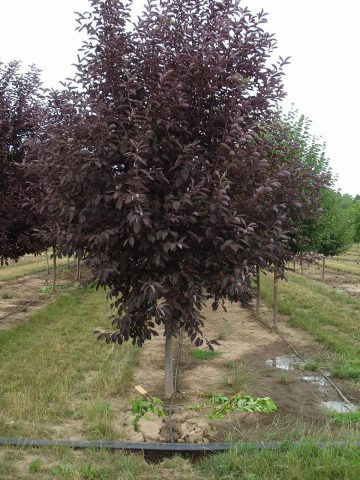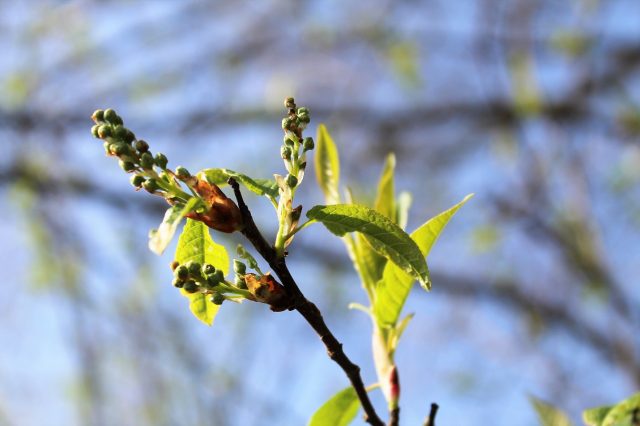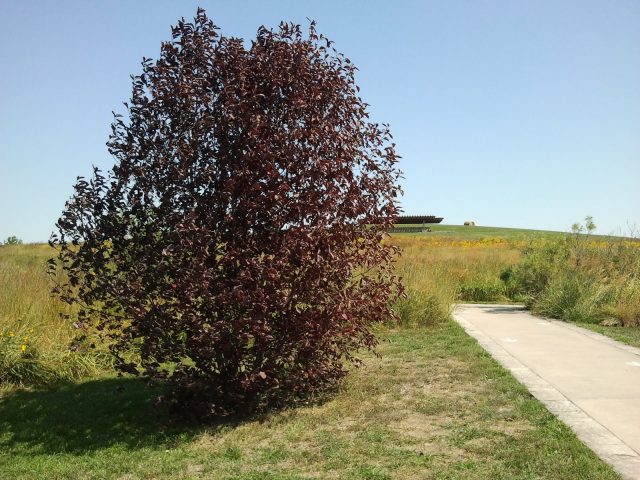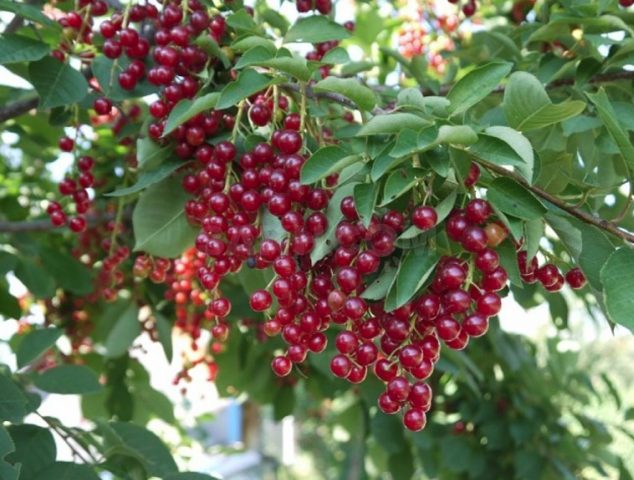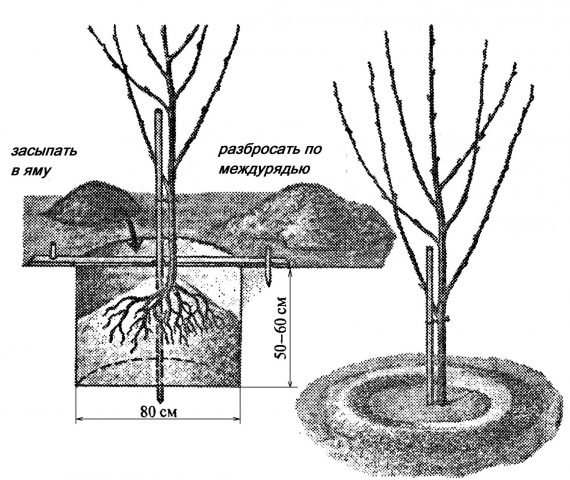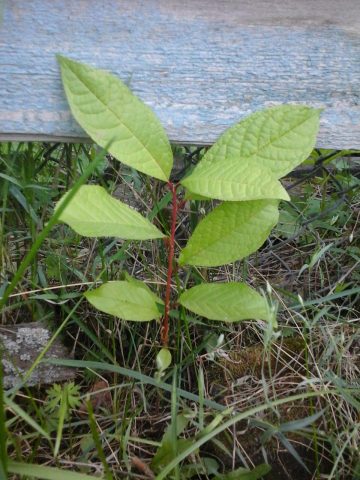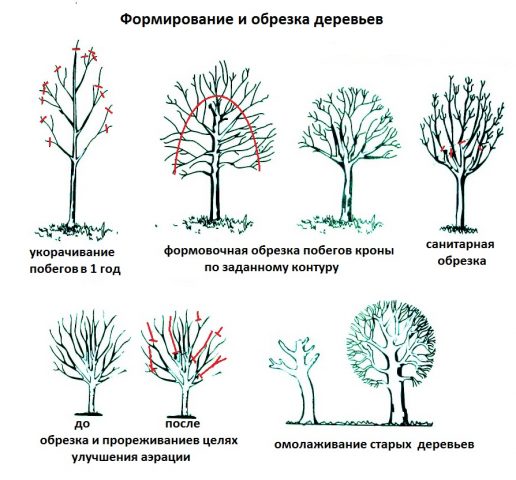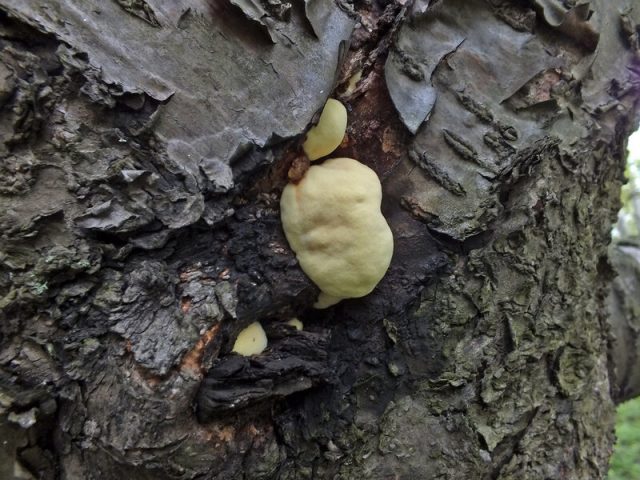Content
Red bird cherry, like other about 200 species of the Plum family, is found everywhere in Eurasia and northern Africa. The tree is grown both for decorative purposes and for the purpose of picking berries.
Is there a red bird cherry
In different gardens you can find not only black, but also red bird cherry. The latter is called Virginskaya. This is due to the place where the culture grew: the tree was brought from the state of Virginia.
The red bird cherry differs from ordinary varieties in the color of berries and leaf plates: the fruits, as they ripen, acquire a scarlet hue, and the green mass of the tree becomes bright red.
The culture is found mainly in America, where it grows wild shoots. In Russia (southern latitudes and the Caucasus), the culture is planted in personal plots.
Description of the variety
Red bird cherry comes in different varieties. The culture quickly adapts to external conditions, bears fruit well, outwardly similar to the common bird cherry.
In North America, the tree can grow up to 12-15 m, in Russia it reaches 5-7 m, it is a shrub.
Young shoots are brown, buds of the same color, oval or conical in shape, up to 5 mm long.
The leaf plates are dense, with a shiny surface, up to 10 cm long. More often they are oval in shape, with jagged edges. The inside of the leaf is lighter than the outside.
The main flowering period occurs in late May or early June in regions where low temperatures prevail. Flowers of a white shade, two-toed in shape, are collected in fluffy brushes, each of which contains 15-30 pieces.
Among the varieties, the bird cherry Schubert is often distinguished. The culture is known for its decorativeness: a tree, 5-10 m high with a wide crown, pleases in spring with pink flowers, and in autumn with burgundy-purple leaf plates. The fruits of the bird cherry are red; as they ripen, they acquire a crimson hue. Ripe berries with juicy pulp appear in mid-August.
The tree is shade-tolerant, but grows faster in sunny places. It is undemanding to the soil, it bears fruit well on moist, mineral-rich soils.
When planting a tree for decorative purposes, it is necessary to locate it on fertile and well-lit soil. In the lowlands, the plant bears poor fruit and grows due to the accumulation of cold air and spring frosts.
Separately, the bird cherry variety Canada Red is distinguished. The tree, 4-5 m high, is highly resistant to low temperatures, has a conical crown.
In spring and summer, the leaf plates are bright green, in autumn they turn brown. Ripe fruits are almost black in color, have a tart taste. The plant is unpretentious, but when favorable conditions are created, it blooms and bears fruit more abundantly.
There are other varieties of red bird cherry:
- Narym and Taiga: bushes with dense foliage, up to 4 m high. It is necessary to plant varieties in several pieces, because they are self-fertile. The berries are large, red in color.
- Dawn: the height of the red bird cherry is up to 3 m, the variety is characterized by early fruiting.
- Self-fertile: mature trees reach 6-7 m, a plant with large leaf plates and powerful branches that form a pyramidal crown.During flowering, large clusters form, ripe berries of an almost black hue.
The yield and fruiting of the variety, as well as its decorative appearance and resistance to unfavorable factors, depend not only on the growing region, but also on the adherence to the planting and care algorithm.
Drought resistance, frost resistance
The red bird cherry variety tolerates low temperatures very well (up to -45 ° C). Spring frosts are not terrible for the tree, but the flowers may suffer, which will negatively affect the harvest.
The plant is undemanding for watering, but planting bird cherry in loamy soils with a source of groundwater will provide the tree with the necessary amount of moisture.
Young shrubs and seedlings have good shade tolerance, but this property decreases over time.
Productivity and fruiting
The yield and the nature of fruiting depends on the variety of red bird cherry. Taiga and Narym have very large, red-colored fruits with yellow flesh inside. Up to 5 kg of berries can be harvested from one shrub.
The early Rassvet variety allows you to get up to 10 kg of fruits per plant. The berries are characterized by a dark red color, the presence of sourness and astringency. From one hybrid Self-fertile, it is possible to collect up to 20 kg of fruits, which have a more pronounced sweetness than Dawn or Taiga.
Advantages and disadvantages
Before planting red bird cherry, one should objectively assess the benefits of the plant:
- unpretentiousness to care;
- shade tolerance;
- yield (depends on the variety);
- decorativeness;
- frost resistance;
- a wide range of crop applications.
The disadvantages of the plant include the need for regular pruning and shaping: the tree grows quickly. You can not eat red bird cherry for small children and pregnant women.
Planting and caring for red bird cherry
The optimal time for transferring seedlings to the soil is autumn or spring. The distance between plants is at least 5 m, so that the shrubs form a full-fledged root system and do not shade each other.
On the site, you must select an illuminated area with slightly alkaline or neutral soil. It is recommended to dilute heavy soil with sand or peat, add superphosphate to the planting pit.
Landing Algorithm:
- A pit is prepared, at the bottom of which fertilizers are placed.
- The seedling is placed in the hole, the roots are straightened.
- The plant is covered with earth, the soil is mulched and watered abundantly.
- If necessary, put a support for the young bird cherry.
Reproduction of red bird cherry is also possible with bones. This is a lengthy procedure: the plant will bear fruit in 6-7 years after planting. For planting, a bone is used, which in the fall is placed in the soil to a depth of 6 cm and sprinkled with earth. The sprout that appears is watered and fertilized in a timely manner, covered for the winter until the bird cherry grows stronger.
It is possible to plant the bird cherry red by cuttings. For this, the green shoots are cut, the leaf plates are removed from them, leaving a few pieces on the top, after which the branches are placed and left in the stimulating solution for a day. After the time has elapsed, it is necessary to transfer the cuttings to the ground to a depth of 3 cm, cover with a film.
Young plants are moved to open ground after the formation of the root system.
Red bird cherry is undemanding to care, but loves loose and moist soil, therefore, in natural conditions, it often grows near rivers.
Abundant watering is required for the culture only immediately after planting: the soil is soaked with water to a depth of 25-30 cm, the procedure is repeated up to 3 times per season. In dry periods, the frequency of watering is increased.
The appearance of the bird cherry depends on the timely pruning of the shrub. To form a lush crown, the seedling is pruned by 50 cm after transfer to the ground.
It is important to ensure air circulation in the root system, therefore it is necessary to regularly loosen the soil and clean it from weeds... This procedure is also carried out before feeding, the measure allows nutrients to penetrate deeper.
It is recommended to use manure as additives, which is applied to the soil every 3 years. Fertilizes soil and mulch, in the role of which are fallen leaves.
To prepare the red bird cherry for winter, the shrub must be watered in the fall, whitewashed before the onset of frost. Adult plants do not need shelter, small or weakened seedlings are wrapped in cloth, covered with snow.
Disease and pest control
Due to the presence of immunity, preventive measures are required only from bird cherry moth. For this, the shrub is treated with tobacco or lavender infusion, soap solution.
From numerous insects that flock to the red bird cherry during flowering, it is recommended to use chemical agents: Aktara, Karbofos.
When a marsupial fungus appears on the trunk, it is necessary to remove it along with the damaged area.
A weakened or damaged plant is often affected by fusarium, therefore, for the prevention of the disease, it is important to fertilize the soil in a timely manner, pruning and shaping.
What can be made from red bird cherry
The most common way to use berries is when they are eaten fresh. Made from red bird cherry tinctures, compotes, jelly and preserves, used as a filling for pies.
If necessary, preserve and transport the berries, after picking them, they are laid out on the surface and dried in a ventilated room so that they do not get exposed to the sun's rays. Dried fruits are collected and stored in a cloth bag.
There is a huge number of videos on the use of red bird cherry: its berries, leaves and even bark for healing and health purposes, so the plant is grown in gardens and as a medicine.
Conclusion
Red bird cherry is a very unpretentious and hardy plant with strong immunity. The culture is widespread everywhere and can bear fruit safely even in latitudes with severe winters. Due to its properties, the shrub fulfills not only a decorative purpose, but is also used in cooking, folk recipes.
